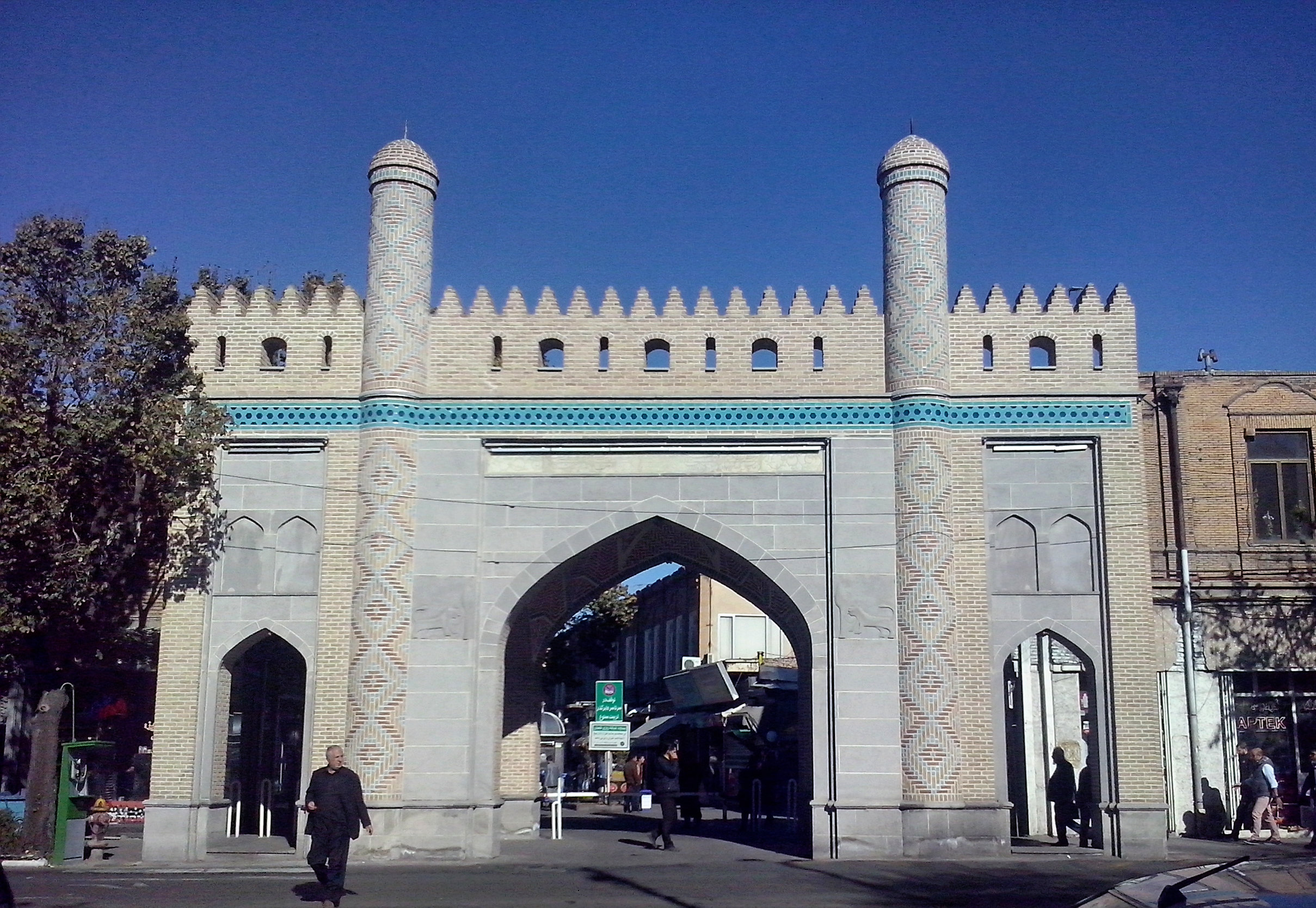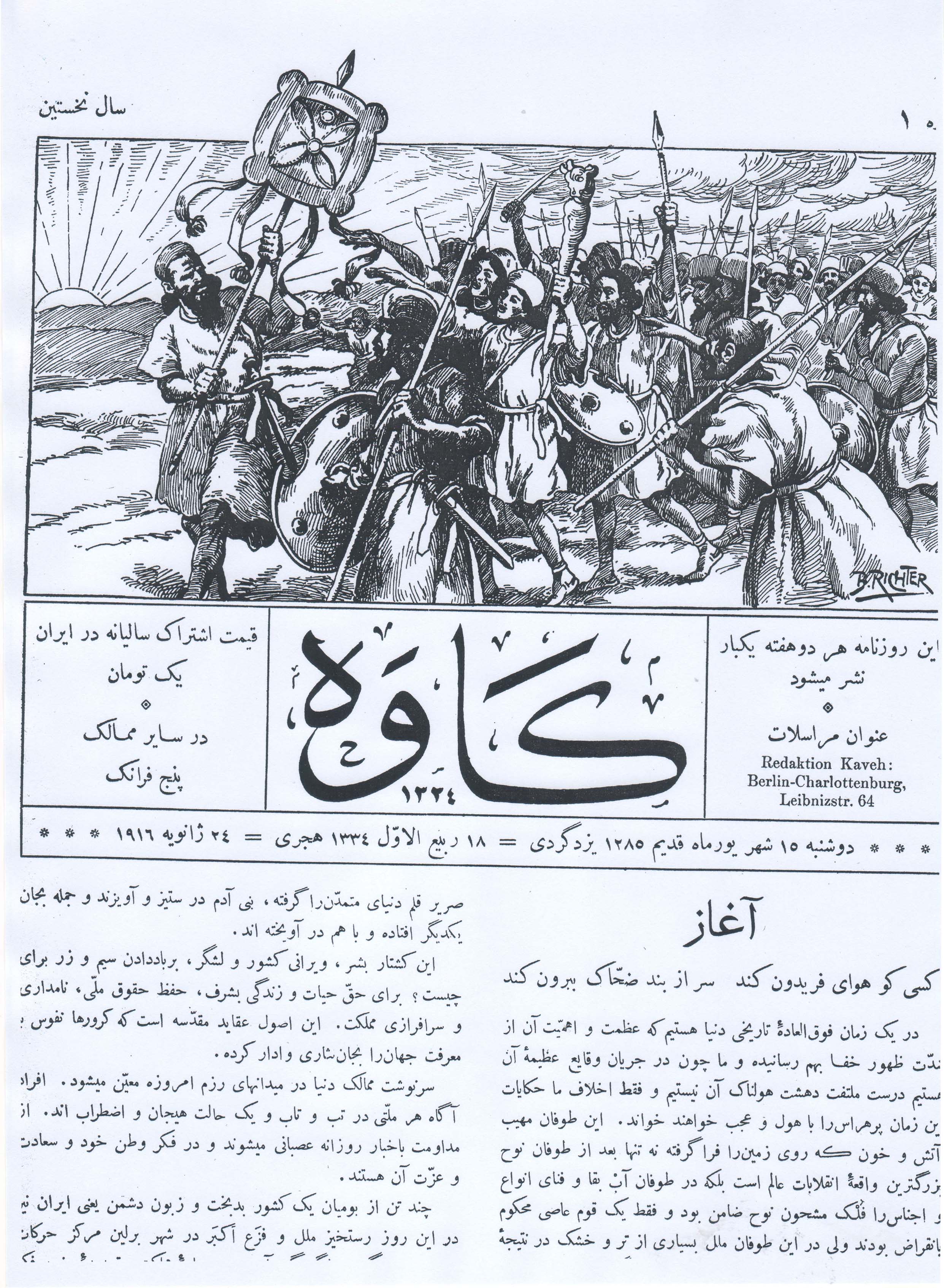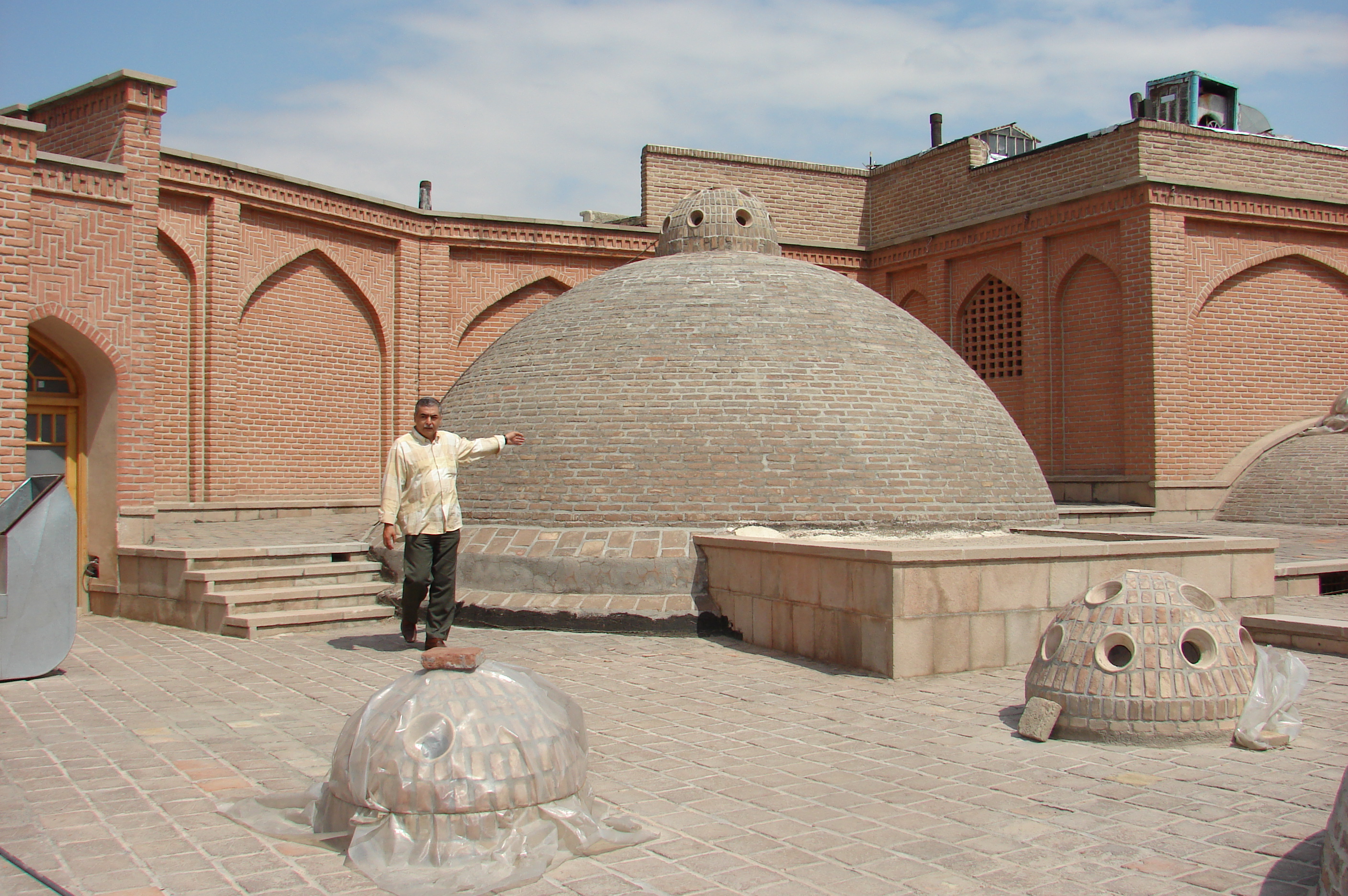|
Tarbiyat Street
Tarbiat is a pedestrian street in the center of Tabriz, Iran. It was built during the Pahlavi Dynasty (the first Pahlavi) and named in memory of Tabriz's mayor Mohammad Ali Tarbiat, who was responsible for initiation of the modernization project of Tabriz. Some parts of Tarbiyat Street were passing through part of the residential complex belonging to Qajar-Batmanghelich (Shah-e-Nimrouz, the commander of the military forces stationed in Northwestern Iran) which was expropriated by Reza shah shortly after his coup against Ahmad Shah Qajar in 1925. During Mayor Darvish Zadeh incumbency (1993–1997) Tarbiyat St. was rebuilt as a pedestrian-only street. Tarbiyat Street currently is considered one of the busiest districts in the city center of Tabriz. It includes a small part of the Tabriz Bazar, known as ''Shishe Gar Khane'', and some modern shopping malls: Shekh Safi, Shams-e Tabrizi, Molana, and some more. The street has a special architecture. Gallery Tarbiat Tabriz.jpg Tarbiya ... [...More Info...] [...Related Items...] OR: [Wikipedia] [Google] [Baidu] |
Nowbar Gate
, native_name_lang = fa , settlement_type = Village , image_skyline = , imagesize = , image_alt = , image_caption = , image_flag = , flag_alt = , image_seal = , seal_alt = , image_shield = , shield_alt = , etymology = , nickname = , motto = , image_map = , map_alt = , map_caption = , pushpin_map = Iran , pushpin_map_alt = , pushpin_map_caption = , pushpin_label_position = , coordinates = , coordinates_footnotes = , subdivision_type = Country , subdivision_name = , subdivision_type1 = Province , subdivision_name1 = West Azerbaijan , subdivision_type2 = County , subdivision_name2 = Bukan , subdivision_type3 = District , subdivision_name3 = Cen ... [...More Info...] [...Related Items...] OR: [Wikipedia] [Google] [Baidu] |
Tabriz
Tabriz ( fa, تبریز ; ) is a city in northwestern Iran, serving as the capital of East Azerbaijan Province. It is the List of largest cities of Iran, sixth-most-populous city in Iran. In the Quri Chay, Quru River valley in Iran's historic Azerbaijan (Iran), Azerbaijan region between long ridges of volcanic cones in the Sahand and Eynali mountains, Tabriz's elevation ranges between above sea level. The valley opens up into a plain that gently slopes down to the eastern shores of Lake Urmia, to the west. With cold winters and temperate summers, Tabriz is considered a summer resort. It was named World Carpet Weaving City by the World Crafts Council in October 2015 and Exemplary Tourist City of 2018 by the Organisation of Islamic Cooperation. With a population of over 1.7 million (2016), Tabriz is the largest economic hub and metropolitan area in northwest Iran. The population is bilingual, speaking Azerbaijani language, Azerbaijani and Persian. Tabriz is a major heavy industrie ... [...More Info...] [...Related Items...] OR: [Wikipedia] [Google] [Baidu] |
Iran
Iran, officially the Islamic Republic of Iran, and also called Persia, is a country located in Western Asia. It is bordered by Iraq and Turkey to the west, by Azerbaijan and Armenia to the northwest, by the Caspian Sea and Turkmenistan to the north, by Afghanistan and Pakistan to the east, and by the Gulf of Oman and the Persian Gulf to the south. It covers an area of , making it the 17th-largest country. Iran has a population of 86 million, making it the 17th-most populous country in the world, and the second-largest in the Middle East. Its largest cities, in descending order, are the capital Tehran, Mashhad, Isfahan, Karaj, Shiraz, and Tabriz. The country is home to one of the world's oldest civilizations, beginning with the formation of the Elamite kingdoms in the fourth millennium BC. It was first unified by the Medes, an ancient Iranian people, in the seventh century BC, and reached its territorial height in the sixth century BC, when Cyrus the Great fo ... [...More Info...] [...Related Items...] OR: [Wikipedia] [Google] [Baidu] |
Mohammad Ali Tarbiat
Mohammad Ali Tarbiat ( fa, محمدعلی تربیت ; born May 26, 1877 — died January 17, 1940) was an Iranian revolutionary, politician and reformist. He founded the Tarbiat library which was the first library in Iran. Tarbiat was a writer active in the Iranian Constitutional Revolution and a member of the National Consultative Assembly from the electorate of Tabriz Tabriz ( fa, تبریز ; ) is a city in northwestern Iran, serving as the capital of East Azerbaijan Province. It is the List of largest cities of Iran, sixth-most-populous city in Iran. In the Quri Chay, Quru River valley in Iran's historic Aze ... (1931-1940). Biography Mohammad Ali Tarbiat was born in 1877 in Nobar, near Tabriz, (province of Azerbaijan, Iran) into a cultured family, an ancestor was secretary to Nader Shah (1688-1747). He predominantly studied natural sciences and medicine at Tabriz. He taught natural sciences for two years at Dar el Fonoun in the higher education establishment (universit ... [...More Info...] [...Related Items...] OR: [Wikipedia] [Google] [Baidu] |
Ahmad Shah Qajar
Ahmad Shah Qajar ( fa, احمد شاه قاجار; 21 January 1898 – 21 February 1930) was Shah of Persia (Iran) from 16 July 1909 to 15 December 1925, and the last ruling member of the Qajar dynasty. Ahmad Shah was born in Tabriz on 21 January 1898 and ascended to the throne at the age of 12 after the removal of his father Mohammad-Ali Shah by the Parliament on 16 July 1909. Due to his young age, his uncle, Ali-Reza Khan, took charge of his affairs as Regent. Upon reaching his majority Ahmad Shah was formally crowned on 21 July 1914. Reign On 16 July 1909, Mohammad Ali Shah was overthrown by rebels seeking to restore the 1906 Constitution. The rebels then convened the Grand Majles of 500 delegates from different backgrounds, which placed Ahmad Shah, Mohammad Ali's eleven-year-old son, on the Sun Throne. The Grand Majlis enacted many reforms. They abolished class representation and created five new seats in the Majlis for minorities: two seats for Armenians, and one sea ... [...More Info...] [...Related Items...] OR: [Wikipedia] [Google] [Baidu] |
Bazaar Of Tabriz
The Bazaar of Tabriz ( fa, بازار تبریز, also Romanized as ''Bāzār-e Tabriz'') is a historical market situated in the city center of Tabriz, Iran. It is one of the oldest bazaars in the Middle East and the largest covered bazaar in the world. It is one of Iran's UNESCO World Heritage Sites. History Tabriz has been a place of cultural exchange since antiquity. Its historic bazaar complex is one of the most important commercial centres on the Silk Road. A bazaar has existed on the same site since the early periods of Iranian urbanism following Islam. The bazaar was mentioned by the Venetian traveler Marco Polo, who claimed to have passed through it while journeying on the Silk Road. Al-Maqdisi in 10th century, Yaqut al-Hamawi in ca. 1213 CE, Zakariya al-Qazwini in ca. 1252 CE, Marco Polo in 1271 CE, Odoric of Pordenone in ca. 1321 CE, Ibn Battuta in ca. 1330 CE, Ambrogio Contarini in 1474 CE, Hamdallah Mustawfi in around 13th to 14th century, John Cartwright in ... [...More Info...] [...Related Items...] OR: [Wikipedia] [Google] [Baidu] |
Nobar Bath
The Nobar Bathhouse is one of the historical Public bathing in Tabriz, Iran. It was constructed in the centre of the city near the Nobar gate, one of the old gates of Tabriz. Nobar bath, which covers an area about 700 sq. metres, was used as a public bath until 1994. Its ruins have been restored by Cultural Heritage Organization of East Azarbaijan Province and registered as part of Iran's National Heritage. Architectural plan Like the other baths in Iran, Nobar bath has a narrow passage, Sar-beena (where people dressed and undressed), heating centre, water pool and Garm-Khaneh (washing part) which ornamented with brick and tile works. Moreover, there were some private bath rooms called Shah-neshin for royal families. Restoration The restoration of Nobar bath has lasted for 6 years. After restoration it equipped and turned to traditional restaurant divided to tree parts and tea house. In the upstairs Kebabs and other local foods and sweets are served. See also * Turkish bath ... [...More Info...] [...Related Items...] OR: [Wikipedia] [Google] [Baidu] |
Ferdowsi Street
Ferdowsi street is a street in downtown of Tabriz, Iran connecting Bazaar alley to Imam Ave in the vicinity of Arg. It is well known for its historical architecture, hostels and shops. It is located in the Bazaar suburb. The street is include numerous shops for industrial tools. خیابان فردوسی خیابانی در مرکز شهر تبریز است که کوچه بازار را به خیابان امام در مجاورت ارگ وصل میکند. این شهر به دلیل معماری تاریخی، هاستل ها و فروشگاه هایش به خوبی شناخته شده است. در حومه بازار واقع شده است. این خیابان شامل مغازه های متعددی برای ابزارآلات صنعتی است See also * Tarbiyat street * Shahnaz street Shahnaz is a street in Tabriz, Iran. The street is well-known because of its distinct architecture, the churches and shops. It is passing through few of Tabriz old suburbs including Baron ... [...More Info...] [...Related Items...] OR: [Wikipedia] [Google] [Baidu] |
Shahnaz Street
Shahnaz is a street in Tabriz, Iran. The street is well-known because of its distinct architecture, the churches and shops. It is passing through few of Tabriz old suburbs including Baron Avak and Emamiye connecting them to the city center and Bazaar of Tabriz. See also * Tarbiyat street * Ferdowsi Street Ferdowsi street is a street in downtown of Tabriz, Iran connecting Bazaar alley to Imam Ave in the vicinity of Arg. It is well known for its historical architecture, hostels and shops. It is located in the Bazaar suburb. The street is include n ... References Editorial Board, East Azarbaijan Geography, Iranian Ministry of Education, 2000(High School Text Book in Persian) * http://www.eachto.ir {{Portalbar, Iran Streets in Tabriz ... [...More Info...] [...Related Items...] OR: [Wikipedia] [Google] [Baidu] |
Architecture In Iran
Iranian architecture or Persian architecture (Persian: معمارى ایرانی, ''Memāri e Irāni'') is the architecture of Iran and parts of the rest of West Asia, the Caucasus and Central Asia. Its history dates back to at least 5,000 BC with characteristic examples distributed over a vast area from Turkey and Iraq to Uzbekistan and Tajikistan, and from the Caucasus to Zanzibar. Persian buildings vary from peasant huts to tea houses, and garden pavilions to "some of the most majestic structures the world has ever seen". In addition to historic gates, palaces, and mosques, the rapid growth of cities such as the capital Tehran has brought about a wave of demolition and new construction. Iranian architecture displays great variety, both structural and aesthetic, from a variety of traditions and experience. Without sudden innovations, and despite the repeated trauma of invasions and cultural shocks, it has achieved "an individuality distinct from that of other Muslim countries" ... [...More Info...] [...Related Items...] OR: [Wikipedia] [Google] [Baidu] |




.jpg)